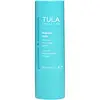What's inside
What's inside
 Key Ingredients
Key Ingredients

 Benefits
Benefits

 Concerns
Concerns

 Ingredients Side-by-side
Ingredients Side-by-side

Water
Skin ConditioningGlycerin
HumectantHydrogenated Starch Hydrolysate
HumectantDisodium Cocoamphodiacetate
CleansingDecyl Glucoside
CleansingPolysorbate 20
EmulsifyingSodium Chloride
MaskingCeteareth-60 Myristyl Glycol
EmulsifyingAquaphilus Dolomiae Extract
Skin ConditioningArginine
MaskingCitric Acid
BufferingCoco-Glucoside
CleansingEvening Primrose Oil/Palm Oil Aminopropanediol Esters
Skin ConditioningGlyceryl Oleate
EmollientGlycine
BufferingHydrogenated Vegetable Glycerides Citrate
EmollientSimmondsia Chinensis Seed Oil
EmollientSodium Benzoate
MaskingTocopherol
AntioxidantTrisodium Ethylenediamine Disuccinate
Water, Glycerin, Hydrogenated Starch Hydrolysate, Disodium Cocoamphodiacetate, Decyl Glucoside, Polysorbate 20, Sodium Chloride, Ceteareth-60 Myristyl Glycol, Aquaphilus Dolomiae Extract, Arginine, Citric Acid, Coco-Glucoside, Evening Primrose Oil/Palm Oil Aminopropanediol Esters, Glyceryl Oleate, Glycine, Hydrogenated Vegetable Glycerides Citrate, Simmondsia Chinensis Seed Oil, Sodium Benzoate, Tocopherol, Trisodium Ethylenediamine Disuccinate
Cetyl Ethylhexanoate
EmollientPolyethylene
AbrasiveHydrogenated Polyisobutene
EmollientPEG-20 Glyceryl Triisostearate
EmollientCaprylic/Capric Triglyceride
MaskingPEG-10 Isostearate
EmulsifyingMicrocrystalline Wax
Emulsion StabilisingOenothera Biennis Oil
EmollientMacadamia Ternifolia Seed Oil
EmollientHelianthus Annuus Seed Oil
EmollientLactococcus Ferment Lysate
Skin ConditioningButyrospermum Parkii Butter
Skin ConditioningOlea Europaea Fruit Oil
MaskingSimmondsia Chinensis Seed Oil
EmollientCopernicia Cerifera Wax
Ethylhexylglycerin
Skin ConditioningCitrus Aurantium Bergamia Fruit Oil
MaskingEclipta Prostrata Extract
Skin ConditioningCitrus Tangerina Peel Oil
MaskingAniba Rosodora Wood Oil
AstringentCitrus Aurantium Dulcis Peel Oil
MaskingMentha Viridis Leaf Oil
AstringentRosmarinus Officinalis Leaf Oil
MaskingCitrus Aurantium Dulcis Flower Oil
AstringentMelia Azadirachta Leaf Extract
Skin ConditioningLactic Acid
BufferingSodium Chloride
MaskingMoringa Oleifera Seed Oil
EmollientTocopheryl Acetate
AntioxidantCaprylyl Glycol
EmollientSodium Benzoate
MaskingCitric Acid
BufferingCetyl Ethylhexanoate, Polyethylene, Hydrogenated Polyisobutene, PEG-20 Glyceryl Triisostearate, Caprylic/Capric Triglyceride, PEG-10 Isostearate, Microcrystalline Wax, Oenothera Biennis Oil, Macadamia Ternifolia Seed Oil, Helianthus Annuus Seed Oil, Lactococcus Ferment Lysate, Butyrospermum Parkii Butter, Olea Europaea Fruit Oil, Simmondsia Chinensis Seed Oil, Copernicia Cerifera Wax, Ethylhexylglycerin, Citrus Aurantium Bergamia Fruit Oil, Eclipta Prostrata Extract, Citrus Tangerina Peel Oil, Aniba Rosodora Wood Oil, Citrus Aurantium Dulcis Peel Oil, Mentha Viridis Leaf Oil, Rosmarinus Officinalis Leaf Oil, Citrus Aurantium Dulcis Flower Oil, Melia Azadirachta Leaf Extract, Lactic Acid, Sodium Chloride, Moringa Oleifera Seed Oil, Tocopheryl Acetate, Caprylyl Glycol, Sodium Benzoate, Citric Acid
 Reviews
Reviews

Ingredients Explained
These ingredients are found in both products.
Ingredients higher up in an ingredient list are typically present in a larger amount.
Citric Acid is an alpha hydroxy acid (AHA) naturally found in citrus fruits like oranges, lemons, and limes.
Like other AHAs, citric acid can exfoliate skin by breaking down the bonds that hold dead skin cells together. This helps reveal smoother and brighter skin underneath.
However, this exfoliating effect only happens at high concentrations (20%) which can be hard to find in cosmetic products.
Due to this, citric acid is usually included in small amounts as a pH adjuster. This helps keep products slightly more acidic and compatible with skin's natural pH.
In skincare formulas, citric acid can:
While it can provide some skin benefits, research shows lactic acid and glycolic acid are generally more effective and less irritating exfoliants.
Most citric acid used in skincare today is made by fermenting sugars (usually from molasses). This synthetic version is identical to the natural citrus form but easier to stabilize and use in formulations.
Read more about some other popular AHA's here:
Learn more about Citric AcidThis oil comes from the seeds of the desert shrub called Jojoba. It is more commonly known as jojoba oil, a non-comedogenic oil.
Jojoba oil does not contain fragrance and has many fatty-acids, making it a great soothing ingredient.
It also contains Vitamin E, a great moisturizing ingredient. Vitamin E is also an antioxidant and protects your skin against oxidative damage.
This ingredient humectant properties, meaning it helps draw moisture from the air. This helps keep your skin hydrated.
While jojoba has antibacterial properties, it is only able to kill some strains of bacteria.
Studies also show it helps in wound healing. In fact, Indigenous cultures have used jojoba as a moisturizer and to help treat burns for centuries.
Fun fact: Jojoba oil similar to natural human skin sebum, so it has a great effect on dry skin. It is also promising with helping to regulate sebum production.
Due to its fatty acid content, Jojoba oil may not be fungal acne safe. We recommend speaking with a professional if you have any concerns.
Learn more about Simmondsia Chinensis Seed OilSodium Benzoate is a preservative. It's used in both cosmetic and food products to inhibit the growth of mold and bacteria. It is typically produced synthetically.
Both the US FDA and EU Health Committee have approved the use of sodium benzoate. In the US, levels of 0.1% (of the total product) are allowed.
Sodium benzoate works as a preservative by inhibiting the growth of bacteria inside of cells. It prevents the cell from fermenting a type of sugar using an enzyme called phosphofructokinase.
It is the salt of benzoic acid. Foods containing sodium benzoate include soda, salad dressings, condiments, fruit juices, wines, and snack foods.
Studies for using ascorbic acid and sodium benzoate in cosmetics are lacking, especially in skincare routines with multiple steps.
We always recommend speaking with a professional, such as a dermatologist, if you have any concerns.
Learn more about Sodium BenzoateChances are, you eat sodium chloride every day. Sodium Chloride is also known as table salt.
This ingredient has many purposes in skincare: thickener, emulsifier, and exfoliator.
You'll most likely find this ingredient in cleansers where it is used to create a gel-like texture. As an emulsifier, it also prevents ingredients from separating.
There is much debate on whether this ingredient is comedogenic. The short answer - comedogenic ratings don't tell the whole story. Learn more about comegodenic ratings here.
The concensus about this ingredient causing acne seems to be divided. Research is needed to understand if this ingredient does cause acne.
Scrubs may use salt as the primary exfoliating ingredient.
Learn more about Sodium Chloride